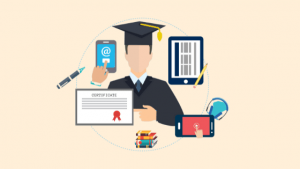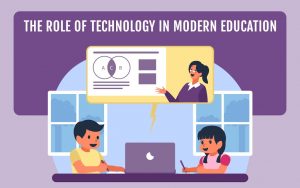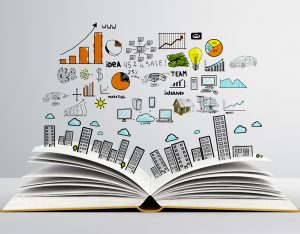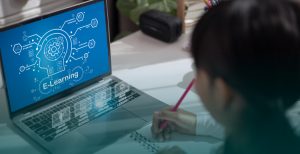The Future of Education: Harnessing the Power of Technology to Transform Learning
Education is undergoing a profound transformation, with technology playing a central role in shaping the way students learn and educators teach. Whether it’s through AI-driven learning platforms, immersive experiences like virtual reality (VR), or personalized learning pathways, the integration of technology in education is rapidly advancing. The question that arises now is not whether technology will continue to revolutionize education, but how we can leverage these innovations to maximize learning outcomes while addressing key challenges. In this blog, we’ll explore the evolving role of technology in education, its potential, emerging trends, and the challenges that lie ahead.
BEST CAREER COUNSELLOR FOR STUDENTS IN DELHI NCR
Technology’s Role in Education: A Current Snapshot
Over the last few decades, technology has infiltrated every facet of our lives, and education has not been left behind. From smartboards in classrooms to online courses and apps designed to teach everything from coding to languages, technology has opened up a world of possibilities for learners and educators alike. However, the COVID-19 pandemic has acted as a catalyst, speeding up the adoption of digital tools in education worldwide. Schools and universities, many of which were reluctant to embrace technology, quickly pivoted to remote learning when the pandemic hit, discovering the power of technology in enabling education in times of crisis.
Today, learning management systems (LMS) like Moodle, Blackboard, and Canvas enable the efficient distribution of course materials, assessment tools, and collaboration among students. At the same time, video conferencing platforms such as Zoom, Google Meet, and Microsoft Teams have made it possible for educators to maintain face-to-face interactions with students in a virtual space.
But the future of education lies in far more than just video calls and digital textbooks. As technology continues to evolve, so too does its potential to create more inclusive, engaging, and personalized learning experiences.
Top career counseling for students in North Delhi: Rohini, Pitampura, and Shalimar Bagh
Emerging Trends Shaping the Future of Education
- AI-Powered Personalized Learning
One of the most promising innovations in education is artificial intelligence (AI). While AI has made significant strides in industries like healthcare, transportation, and finance, it is now making its way into the classroom. AI allows for personalized learning by adapting content and assessments to suit individual students’ needs, learning styles, and progress. For example, AI-powered tools like DreamBox and Squirrel AI can assess a student’s current understanding of a topic and deliver customized lessons that fill gaps in their knowledge.
By automating many administrative tasks—such as grading assignments and tracking student progress—AI allows educators to spend more time interacting with students. Additionally, AI can be used to create virtual tutors that provide real-time assistance to students, answering questions and offering explanations on demand.
The ability to create individualized learning paths can help students work at their own pace, which is particularly beneficial for those who may need extra support or those who can advance faster than the traditional classroom pace. AI helps bridge the gap between students’ varying abilities and ensures that every learner can receive the attention they deserve.
Best career counseling services in South Delhi: Hauz Khas, Saket, and Greater Kailash
- Immersive Learning with Augmented Reality (AR) and Virtual Reality (VR)
Augmented reality (AR) and virtual reality (VR) have emerged as groundbreaking tools for making learning more engaging, interactive, and immersive. AR enhances the real world by overlaying digital content, whereas VR creates entirely virtual environments. Both technologies offer unique opportunities to revolutionize how students interact with subject matter, making abstract or difficult concepts easier to understand.
For instance, in a history class, students could use VR headsets to “travel” to ancient civilizations or witness significant historical events firsthand. In science, AR could bring anatomy lessons to life by allowing students to explore 3D models of the human body. These technologies provide rich, interactive experiences that cater to different learning styles—whether auditory, visual, or kinesthetic.
One of the key benefits of AR and VR is their ability to offer “hands-on” experiences without the constraints of physical space or resources. Students can virtually conduct science experiments, dissect virtual organisms, or engage in simulations of real-world scenarios like surgical procedures, all from the safety and comfort of their homes.
- Blockchain for Credentialing and Record Keeping
Another technological advancement poised to change education is blockchain. Blockchain is best known for supporting cryptocurrencies like Bitcoin, but its potential extends far beyond digital currencies. In education, blockchain can be used to securely store and verify academic credentials, making the process of tracking and sharing qualifications more transparent, efficient, and tamper-proof.
In the future, instead of relying on paper diplomas and transcripts, students could have a digital portfolio that is stored on the blockchain, enabling them to easily share their credentials with potential employers or educational institutions. This decentralized and immutable record system could help combat fraud, reduce administrative overhead, and empower students to take control of their academic history.
Blockchain could also make micro-credentials and certifications more accessible. As the job market evolves, workers are increasingly seeking shorter, more specialized learning experiences rather than traditional degrees. Blockchain could enable the creation of secure, verifiable digital badges for these credentials, allowing employers to easily validate the skills of job candidates.
Best career counseling services in West Delhi: Janakpuri, Rajouri Garden, and Punjabi Bagh
- Gamification in Learning
Gamification is a concept that incorporates game-like elements—such as points, rewards, and challenges—into educational contexts. It is rapidly gaining popularity as a way to increase engagement and motivation among students. By making learning more interactive and enjoyable, gamification taps into students’ natural love for play and competition.
For instance, platforms like Kahoot! allow educators to turn quizzes into competitive games where students can earn points and prizes. Similarly, applications like Classcraft gamify classroom behavior management by rewarding positive actions and achievements. This approach makes learning fun, which helps students retain information better and stay motivated throughout the process.
Gamification can also support collaboration, as students can work together to solve challenges and achieve shared goals. The use of game mechanics in education helps foster teamwork, problem-solving, and critical thinking—all of which are crucial skills for the future workforce.
- Hybrid Learning Models: A New Era of Flexibility
The traditional classroom model is being disrupted, and hybrid learning—blending in-person and online education—is quickly becoming the norm. The pandemic forced many educational institutions to adopt remote learning, and many students and educators found that a combination of digital and in-person learning provided greater flexibility, convenience, and engagement.
Hybrid models allow students to learn in a way that suits their individual needs. Some students may prefer the structure and social interaction of face-to-face learning, while others may thrive in the self-paced, flexible nature of online courses. The hybrid model accommodates both, providing a more personalized experience for students and allowing them to control when and how they engage with course content.
The rise of hybrid learning also encourages a global approach to education. Students from different parts of the world can now participate in courses and collaborate with peers across borders, expanding access to diverse perspectives and resources.
The Challenges of Technology in Education
While the potential for technology to revolutionize education is vast, several challenges remain that must be addressed for these innovations to reach their full potential.
- The Digital Divide
Despite the tremendous advances in technology, not all students have equal access to the digital tools necessary for effective learning. The digital divide—the gap between those with access to technology and those without—continues to pose a significant barrier to equitable education. This divide affects students in low-income households, rural areas, and developing countries, where access to reliable internet, devices, and digital literacy programs is limited.
To address this issue, governments, non-profit organizations, and tech companies must work together to provide affordable access to devices and high-speed internet, as well as digital literacy training to help students and teachers navigate new technologies effectively.
- Data Privacy and Security
As more educational data moves online, ensuring the privacy and security of students’ personal information becomes a critical concern. With data breaches and cyberattacks on the rise, protecting sensitive student data must be a priority. Institutions need to implement strong cybersecurity measures, transparent data policies, and ensure compliance with regulations such as the General Data Protection Regulation (GDPR) to safeguard student privacy.
- Teacher Training and Professional Development
Technology in education is only as effective as the educators who use it. Teachers must be adequately trained to integrate technology into their teaching practices, and this training needs to go beyond simply using digital tools. It should include developing new pedagogical strategies for online and hybrid learning environments, incorporating AI, and ensuring students’ emotional and social needs are met in digital settings.
- The Need for Critical Thinking and Digital Literacy
While technology can provide students with vast amounts of information, it’s crucial to teach them how to use these tools responsibly and critically. As technology advances, educators must help students develop the skills needed to navigate an increasingly complex digital world. This includes the ability to assess the credibility of online sources, recognize misinformation, and use technology ethically.
Best career counseling services in East Delhi: Laxmi Nagar, Preet Vihar, and Mayur Vihar.
The Road Ahead: What’s Next for Education and Technology?
The future of education is exciting, with technology offering opportunities for personalized, immersive, and globally connected learning experiences. The integration of AI, VR/AR, blockchain, and gamification is just the beginning. As these technologies mature and new innovations emerge, the classroom of tomorrow will look vastly different from today.
However, the path forward is not without its challenges. Closing the digital divide, ensuring data security, and equipping educators with the necessary skills will require collaboration between governments, schools, technology providers, and communities. But with the right investments, policies, and mindset, technology has the potential to make education more inclusive, engaging, and effective than ever before.
The next generation of students is growing up in an increasingly digital world, and the role of technology in education will only continue to expand. As we look to the future, it’s essential to ensure that technology is used to foster curiosity, critical thinking, and lifelong learning for all students, regardless of their background or circumstances.
This blog provides a thorough exploration of how technology is transforming
BEST CAREER COUNSELLOR FOR STUDENTS IN DELHI NCR











